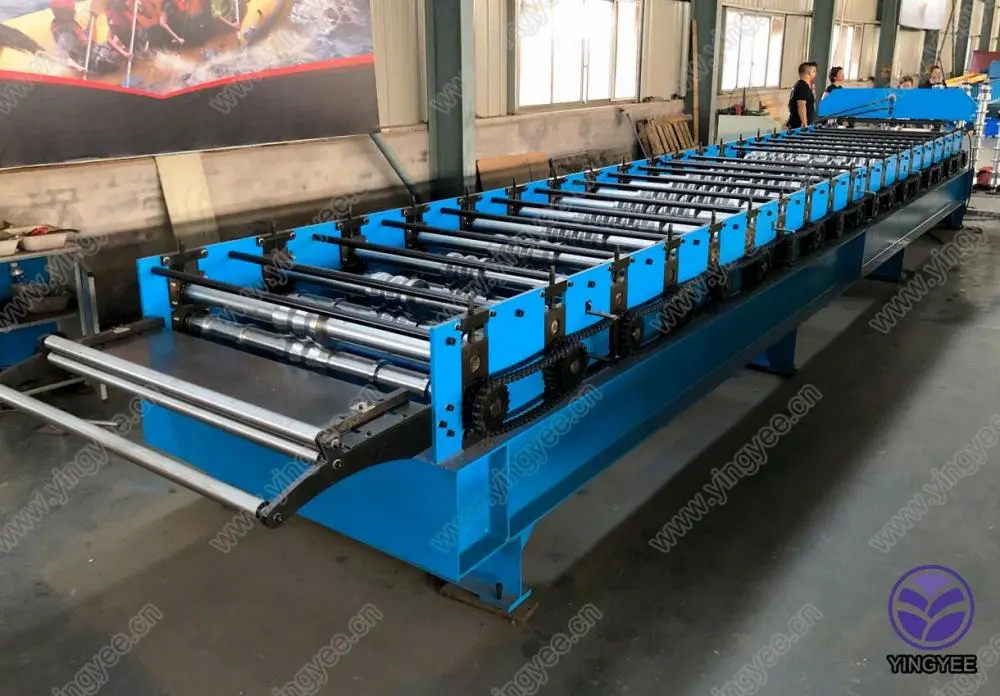
Understanding the Strut Channel Roll Forming Machine
In the realm of metal fabrication, the strut channel roll forming machine stands as an essential piece of equipment. This specialized machine is designed to produce strut channels, which are versatile structural supports used in various construction and industrial applications. In this article, we will explore the workings, advantages, and applications of strut channel roll forming machines.
What is a Strut Channel?
A strut channel, often referred to as a metal framing channel, is a standardized structural element primarily made from steel or aluminum. It is characterized by its U-shaped or C-shaped profile, which allows it to support various loads while providing a robust framework for mounting and connecting different components. Strut channels are widely used in electrical installations, HVAC (heating, ventilation, and air conditioning) systems, and for general construction purposes.
The Role of Roll Forming
Roll forming is a continuous bending process in which a long strip of metal is gradually shaped into a desired profile through a series of rollers. This method is highly efficient, allowing for the mass production of identical profiles with precise dimensions and smooth finishes. The strut channel roll forming machine automates this process, streamlining production and reducing material waste.
How Does a Strut Channel Roll Forming Machine Work?
A strut channel roll forming machine operates by feeding a flat steel or aluminum sheet through a series of paired rollers. Each roller gradually shapes the material into the desired strut channel profile. The process typically involves several steps
1. Material Feeding The raw material, often in the form of steel coils, is fed into the machine. 2. Roll Forming The material passes through multiple stations of rollers, each applying pressure to gradually form the channel shape. 3. Cutting Once the strut channel reaches the desired length, a cutting mechanism slices it into individual pieces. 4. Finishing Additional processes like punching holes or adding flanges can be performed to enhance the strut channel's functionality.
Benefits of Using a Strut Channel Roll Forming Machine

1. Efficiency Roll forming is an efficient manufacturing technique that can produce a large volume of strut channels in a short amount of time. This efficiency is vital in meeting tight construction deadlines. 2. Precision and Consistency The automated nature of the roll forming process ensures that each strut channel produced meets exact specifications. This level of precision reduces the likelihood of errors and material waste.
3. Versatility Strut channel roll forming machines can be designed to create a variety of channel sizes and shapes, allowing manufacturers to cater to diverse customer needs.
4. Cost-Effectiveness By minimizing material waste and improving production speed, strut channel roll forming machines can lead to significant cost savings in the manufacturing process.
5. Durability Roll-formed strut channels exhibit high strength and durability, making them suitable for heavy-duty applications in construction and industrial environments.
Applications of Strut Channels
Strut channels are invaluable in several sectors. They are commonly used in
- Building Construction For supporting mechanical systems, electrical conduits, and piping. - Automotive Industry In the assembly of vehicles, providing structural reinforcement. - Telecommunications For mounting and supporting communication equipment. - Manufacturing In machinery construction and equipment support.
Conclusion
The strut channel roll forming machine represents a significant advancement in metal fabrication technology. By ensuring efficiency, precision, and versatility in the production of strut channels, this machine plays a critical role in modern construction and manufacturing processes. As industries continue to evolve, the importance of such machinery will only grow, driving innovation and meeting the increasing demand for high-quality structural components.